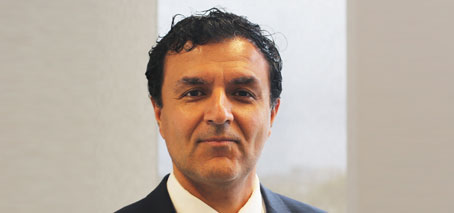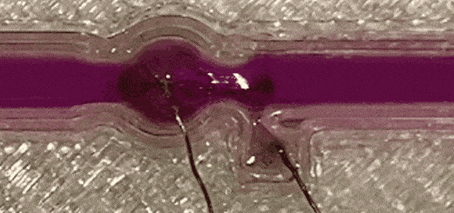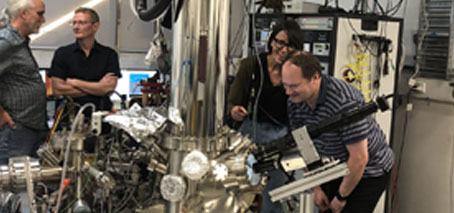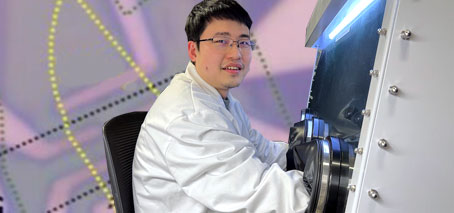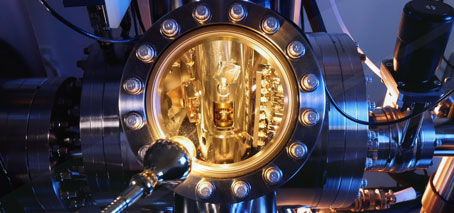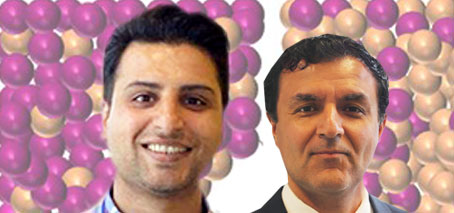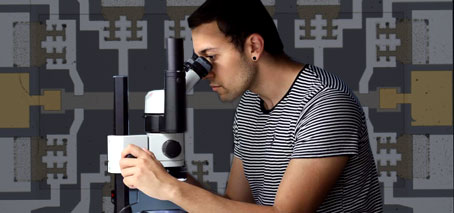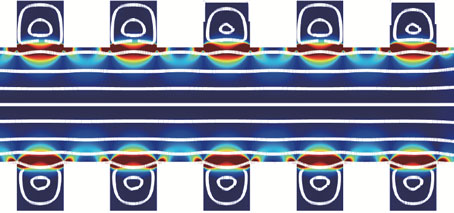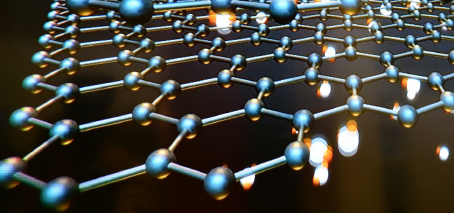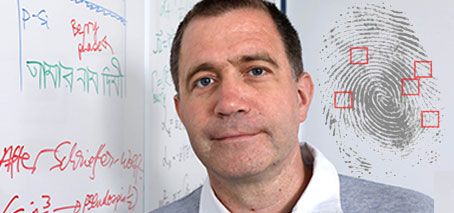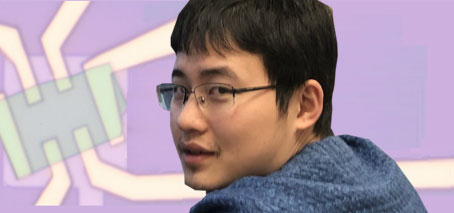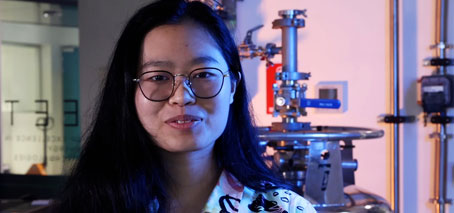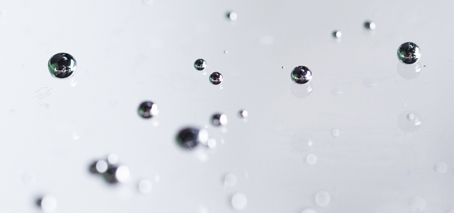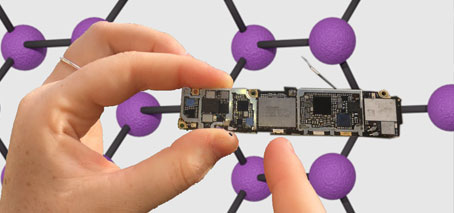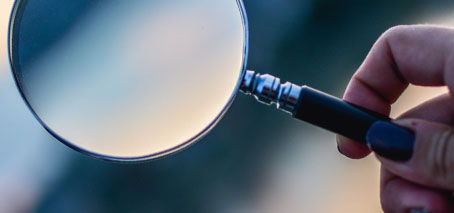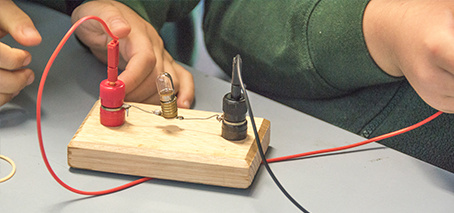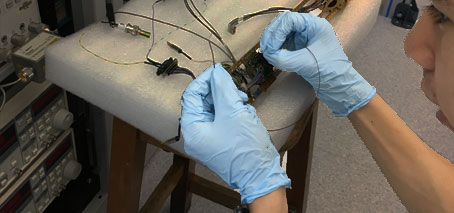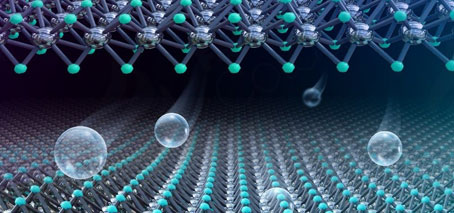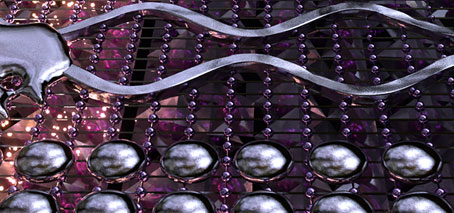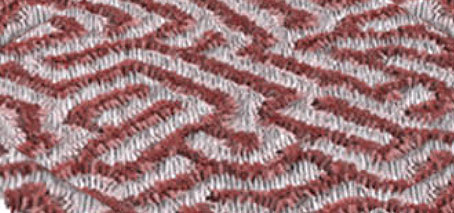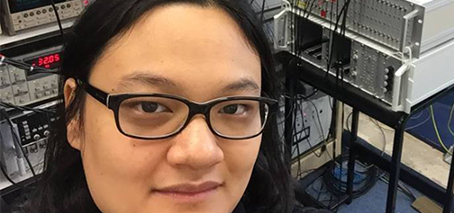FLEET Chief Investigator Prof Kourosh Kalantar-zadeh has been named in the top 1% by citations in his field (cross field) for the fourth year running. Read more. Congratulations also to FLEET AI Torben Daeneke, whose appointment to Associate Professor at RMIT has just been announced. And to UOW’s Zengji Yue who had been appointed an Associate Investigator within FLEET. FLEET AI Sumeet …
Kourosh Kalantar-zadeh top 1%
FLEET Chief Investigator Prof Kourosh Kalantar-zadeh has been named in the top 1% by citations in his field (cross field) for the fourth year running. The Clarivate Analytics list identifies the most influential researchers by citations. The citation identifies influential researchers as determined by their peers around the globe – those who have consistently won recognition in the form of …
No more moving parts: Liquid metal enabled chemical reactors
Liquid-metal machines could wipe out maintenance issues for continuous flow reactors. Metals that are liquid at room temperature, such as gallium and its alloys, are attractive materials due to their unique electrical, thermal and fluidic properties. In a study published today, a research team led by UNSW, Sydney has shown that liquid metals can offer their characteristics to the pharmaceutical and chemical …
Welcoming Simon Granville (MacDiarmid) new FLEET Partner Investigator
Welcome to FLEET’s long-time collaborator Dr Simon Granville, who this month joins the Centre as a Partner Investigator. Simon is a Principal Investigator at FLEET’s partner organisation the MacDiarmid Institute for Advanced Materials and Nanotechnology, where he leads the Institute’s Future Computing project to control electron transport and spin through superconductivity and topology. As a Senior Scientist at the Robinson …
Quantifying spin in WTe2 for future spintronics
Spin-momentum locking induced anisotropic magnetoresistance in monolayer WTe2 Determining spin quantization axis, an essential element for fabricating spintronic devices, in 2D topological insulator WTe2 by measuring anisotropic magnetoresistance A RMIT-led, international collaboration published this week has observed large in-plane anisotropic magnetoresistance (AMR) in a quantum spin Hall insulator and the spin quantization axis of the edge states can be well-defined. …
Stress can be good for you: enhancing piezoelectric properties under pressure
Innovative epitaxy technique creates a new phase of the popular multiferroic BiFeO3 Stress enhances the properties of a promising material for future technologies. UNSW researchers find a new exotic state of one of the most promising multiferroic materials, with exciting implications for future technologies using these enhanced properties. Combining a careful balance of thin-film strain, distortion, and thickness, the team …
Elements in liquid metals compete to win the surface
Some alloys are in the liquid state at or near room temperature. These alloys are usually composed of gallium and indium (elements used in low energy lamps), tin and bismuth (materials used in constructions). The ratio and nature of elements in liquid alloys generate extraordinary phenomena on the surface of liquid metals which have been rarely explored to date and …
Home-grown semiconductors for faster, smaller electronics
‘Growing’ electronic components directly onto a semiconductor block avoids messy, noisy oxidation scattering that slows and impedes electronic operation. A UNSW study out this month shows that the resulting high-mobility components are ideal candidates for high-frequency, ultra-small electronic devices, quantum dots, and for qubit applications in quantum computing. Smaller means faster, but also noisier Making computers faster requires ever-smaller transistors, …
A Smooth Conduit for Electron Fluids
—first published APS Physics Electrons flow like a viscous fluid through a 2D channel with perfectly smooth sidewalls, offering a new platform to test solid-state and fluid dynamics theories. Electrons can, under certain conditions, flow like a fluid that’s thicker than honey. Now researchers have managed to observe this viscous fluid behavior in a way that allows unambiguous measurements and …
New 2D research hub features FLEET talent
A new ARC Research Hub highlighting the role of novel and 2D materials in emerging technologies in fields such as energy storage, purification and printed electronics features FLEET talent amongst its team. The ARC Research Hub for Advanced Manufacturing with 2D Materials (AM2D) will be led by Prof Mainak Majumder (Monash Department of Mechanical Engineering). Two FLEET Chief Investigators are amongst …
Identifying a topological fingerprint
Generating a topological anomalous Hall effect in a non-magnetic conductor anomalous planar Hall effect (APHE) the ‘smoking gun’ for the topological magnetic monopole in momentum space A FLEET theoretical study out this week has found a ‘smoking gun’ in the long search for the topological magnetic monopole referred to as the Berry curvature. This discovery is a breakthrough in the …
Transforming the layered ferromagnet Fe5GeTe2 for future spintronics
Realizing in-situ magnetic phase transition in metallic van-der-Waals magnet Fe5GeTe2 via ultra-high charge doping A RMIT-led international collaboration published this week has achieved record-high electron doping in a layered ferromagnet, causing magnetic phase transition with significant promise for future electronics Control of magnetism (or spin directions) by electric voltage is vital for developing future, low-energy high-speed nano-electronic and spintronic devices, …
Australian STEM recognised in Shanghai rankings
Great results for STEM in Australian universities in the Shanghai/ARWU 2021 rankings, with Australian universities represented in the world top-100 for all the natural sciences and engineering disciplines except maths. Highlights amongst FLEET’s participating nodes include: Monash and ANU (#28) ranked in the global top 100 for physics UNSW top 40 for electronic engineering Monash, UOW, UNSW and UQ top 100 for material …
Women in FLEET Honours students at RMIT, UNSW, ANU
Please welcome FLEET’s three new Women in FLEET Honours students: Kyla Rutherford (RMIT) Olivia Kong (UNSW) Robin Hu (ANU) Kyla, Olivia and Robin have all received Women in FLEET Honours Scholarships, which are awarded to high performing students doing their Honours research project with FLEET. Kyla Rutherford will be working with Jared Cole at RMIT to understand transport properties in …
FLEET reps at Science meets Parliament
FLEET had four researchers at STA’s annual Science Meets Parliament, which was fully online in 2021, other than regional gala dinners. Participants heard from a diverse mix of Australia’s top scientists, including Chief Scientist Cathy Foley and Chief Defence Scientist Tanya Monro. FLEET’s four ECR delegates—Eli Estrecho (ANU), Peggy (Qi) Zhang (UNSW), Gary Beane (Monash) and Harley Scammell (UNSW)—were introduced …
Engaging with industry in 2020
FLEET is building links with partners interested in novel electronic devices and systems working towards the overarching goal of creating pathways to translations of research outcomes. Progress towards this important goal in 2020 included: Adding topological transistors to the Institute of Electrical and Electronics Engineers (IEEE) International Roadmap for Devices and Systems Lodging two provisional patents: topological switching (Fuhrer Monash and …
Liquid metals spin-off launched
The Liquid-metals spin-off company Liquid Metal Plus (LM+) initiated in 2020 with FLEET investigators Kourosh Kalantar-Zadeh (UNSW) and Dr Torben Daeneke (RMIT), together with Dorna Esrafilzadeh (UNSW), was launched in April 2021. Pushing print on flexible touchscreens Climate rewind: turning CO2 back into coal The company has two areas of focus, with the unifying theme being application of liquid-metal technologies …
Topological materials beat Boltzmann’s tyranny: Surpassing lower limit on computing energy consumption
Topological insulators can reduce transistor switching energy by a factor of four Defeating Boltzman’s tyranny, which puts a lower limit on operating voltage New FLEET research confirms the potential for topological materials to substantially reduce the energy consumed by computing. The collaboration of FLEET researchers from University of Wollongong, Monash University and UNSW have shown in a theoretical study that …
A new, positive approach could be the key to next-generation, transparent electronics
A new study, out this week, could pave the way to revolutionary, transparent electronics. Such see-through devices could potentially be integrated in glass, in flexible displays and in smart contact lenses, bringing to life futuristic devices that seem like the product of science fiction. For several decades, researchers have sought a new class of electronics based on semiconducting oxides, whose …
Qubits comprised of holes could be the trick to build faster, larger quantum computers
New study indicates holes the solution to operational speed/coherence trade-off, potential scaling up of qubits to a mini-quantum computer. Quantum computers are predicted to be much more powerful and functional than today’s ‘classical’ computers. One way to make a quantum bit is to use the ‘spin’ of an electron, which can point either up or down. To make quantum computers …
Engaging senior school students at JMSS in 2020
In 2020, FLEET continued the Year 10 ‘Future electronics’ course launched the year before in partnership with John Monash Science School (JMSS), Victoria. As well as covering the history of semiconductors, Moore’s Law and computing, the course introduces quantum physics at an intuitive level (with minimal maths) and expands on this fundamental understanding to explain complex, useful quantum states such …
Summer students introduce undergrads to quantum device study at UNSW
Alex Hamilton’s QED group at UNSW recently hosted four summer students, working alongside FLEET’s researchers on nanofabrication and characterisation projects connected to the QED group’s key research mission. Over the course of their six-week placement, students pursued individual projects within the groups research project, developing individual skills in device fabrication and experimental process. The UNSW Physics Quantum Electronic Devices group …
Remote outreach that’s also hands-on
FLEET scientists seeking new, creative ways to do science outreach found a silver lining in Covid-19 restrictions: they actually improved the experience for students. A team of FLEET-UNSW PhDs and early-career researchers (ECRs) was able to bridge 2020’s Covid restrictions to safely engage a classroom of students with virtual, but hands-on science. Led by PhD student Vivasha Govinden and node …
Nano-thin piezoelectrics advance self-powered electronics
A new type of ultra-efficient, nano-thin material could advance self-powered electronics, wearable technologies and even deliver pacemakers powered by heart beats. The flexible and printable piezoelectric material, which can convert mechanical pressure into electrical energy, has been developed by an Australian research team led by RMIT. It is 100,000 times thinner than a human hair and 800% more efficient than …
Zebra stripes, leopard spots and other patterns on the skin of frozen metal alloys that defy conventional metallurgy
“Stripy zebra, spotty leopard, …”. Kids never become bored pinpointing animals based on their unique body patterns. While it is fascinating that living creatures develop distinct patterns on their skin, what may be even more mysterious is their striking similarity to the skin of frozen liquid metals. Pattern formation is a classic example of one of nature’s wonders that scientists …
One-dimensional quantum nanowires fertile ground for Majorana zero modes
Important step towards fault-tolerant quantum computing Why is studying spin properties of one-dimensional quantum nanowires important? Quantum nanowires–which have length but no width or height–provide a unique environment for the formation and detection of a quasiparticle known as a Majorana zero mode. A new UNSW-led study overcomes previous difficulty detecting the Majorana zero mode, and produces a significant improvement in …
Seeking answers in ferroelectric patterning
Why do some ferroelectric materials display bubble-shaped patterning, while others display complex, labyrinthine patterns? A FLEET study finds the answer to the changing patterns in ferroelectric films lies in non-equilibrium dynamics, with topological defects driving subsequent evolution. Ferroelectric materials can be considered an electrical analogy to ferromagnetic materials, with their permanent electric polarisation resembling the north and south poles of …
Supporting future science leaders
FLEET is committed to developing Australia’s next generation of science leaders, and to improving on the current imbalance of women in higher positions in STEM. Career support for women in FLEET works towards each of these two goals, providing an environment in which early-career women can thrive and progress, growing into capable and confident leaders. Four FLEET women were successful …
Electrical spin filtering the key to ultra-fast, energy-efficient spintronics
Spin-filtering could be the key to faster, more energy-efficient switching in future spintronic technology, allowing the detection of spin by electrical rather than magnetic means. A paper published last month by researchers at UNSW and international collaborators demonstrates spin detection using a spin filter to separate spin orientation according to their energies. Ultra-fast, ultra-low energy ‘spintronic’ devices are an exciting, …
Kourosh Kalantar-zadeh named in top 1% of researchers
FLEET Chief Investigator Prof Kourosh Kalantar-zadeh has been named in the top 1% by citations in his field for the third year running. The Clarivate Analytics list identifies researchers ranking in the top 1% by citations for their field. The citation identifies influential researchers as determined by their peers around the globe – those who have consistently won recognition in …


